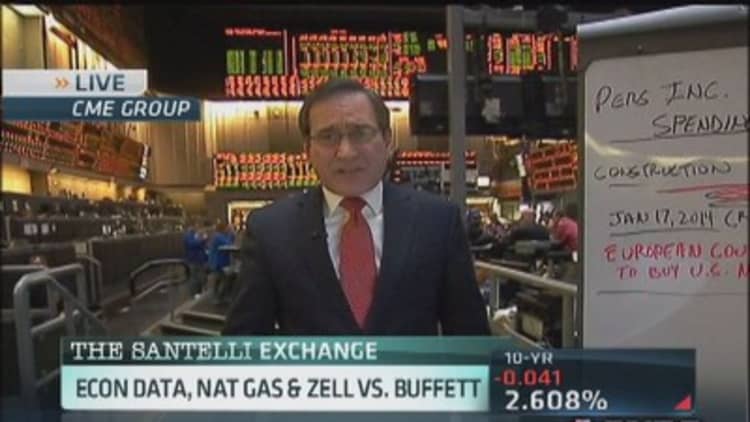What boom? While the United States enjoys a surge in oil and natural gas production, its two largest oil companies — Exxon Mobil and Chevron — have so far missed the party.
Big Oil was slow to jump into the fracking business, which has transformed U.S. energy markets by extracting oil and gas from shale deposits. And its latest quarterly reports show how it's struggling to get on board.
"The big oil companies were late to invest in shale. They're trying to play catch-up," says Brian Youngberg, an analyst at Edward Jones, noting smaller and more nimble companies got into fracking more quickly. He says the multinationals are now investing in new shale developments, but since they're so big, it's difficult for any single project to shift their overall bottom line.
Read MoreState of Ohio links fracking to tremors
The nation's energy boom is largely due to the combined use of horizontal drilling and hydraulic fracturing, or fracking, which has made it cheaper to break apart shale rock and extract oil or gas trapped deep underground. Since 2005, U.S. production has risen 35% for natural gas and 44% for crude oil, according to the U.S. Energy Information Administration.
The major oil companies, which have invested heavily in mega projects offshore and abroad, report a different story.
Exxon, the nation's largest oil company, said Thursday that it produced 5% less natural gas in the United States during the first three months of 2014 than it did in the same period a year ago. Its domestic production of crude oil and other liquids rose 1.6%.
Chevron, the second-largest U.S. oil company, reported declining production. On Friday, it said it produced 4% less oil and 3% less natural gas in the United States during 2014's first quarter than it did a year ago.
Only the third-largest U.S. oil company, ConocoPhillips, did slightly better. On Thursday, it reported a U.S. production uptick of 2.4% for crude oil and 1.8% for natural gas in the first three months of 2104, compared with the same period last year.
"It's a remarkable paradox. Who should have led this American energy revolution? It should have been the majors," says Gregory Zuckerman, author of the 2013 book, "The Frackers: The Outrageous Inside Story of the New Billionaire Wildcatters."
He says Exxon's Texas headquarters was sitting nearly atop the Barnett shale formation, but "it was drilling anywhere but in its own backyard." Also, he says Chevron had a team of researchers in the early 1990s that was pushing for shale development — then considered too costly to be profitable — but shut down its work in 1997.
"Instead, it was a bunch of unlikely characters" who invested in shale because — unlike the big guys — they didn't have other options, Zuckerman says. These wildcatters — some desperate to turn around sinking fortunes — ignored the conventional wisdom about shale and experimented with fracking.
Zuckerman says the Big Three have realized they missed the fracking revolution and have spent a lot to fix that. "They got in too late and paid too much," he says, adding it will take years for them to show notable gains from their investments.

Chevron CEO John Watson said he expects the company's new oil and gas developments, including projects in Australia, Argentina, Azerbaijan, Myanmar and the Gulf of Mexico, will boost global production next year and possibly 20% by 2017.
Youngberg agrees. He sees 2014 as a transition year for Chevron, which is already increasing production of natural gas from the Marcellus shale in the Eastern U.S. and oil from the Permian Basin in Texas, although not enough yet to make up for declines in legacy properties elsewhere. He expects Chevron will show some production growth next year and even more in 2016.
As for ConocoPhillips, Youngberg says it will have an easier time showing progress with individual projects because of its smaller size. The company said its production in two of the nation's largest shale formations — Texas' Eagle Ford and the upper Midwest's Bakken — jumped 41% so far this year compared with the first quarter of 2013.
Read More Fracking process turns 65
David Rosenthal, Exxon's vice president of investor relations, said in an earnings call with stock analysts that his company is also ramping up new oil and gas projects in the United States. It has a new agreement with the state of Alaska to develop a liquefied natural gas, or LNG, project and is expanding acreage in the Permian Basin, site of the Wolfcamp shale formation.
—By Wendy Koch of USA Today

